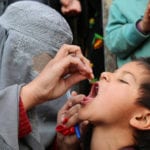 Travel
Travel  Travel
Travel  Creepy
Creepy 10 Haunted Places in Alabama
 History
History Top 10 Tragic Facts about England’s 9 Days Queen
 Food
Food 10 Weird Foods Inspired by Your Favorite Movies
 Religion
Religion 10 Mind-Blowing Claims and Messages Hidden in the Bible Code
 Facts
Facts 10 Things You Never Knew about the History of Gambling
 Weird Stuff
Weird Stuff 10 Cool and Creepy Facts about Collecting Tears
 Humans
Humans The Ten Most Lethal Gunslingers of the Old West
 Misconceptions
Misconceptions 10 Phony Myths and Urban Legends That Just Won’t Die
 History
History 10 Amazing Roman Epitaphs
 Travel
Travel Top 10 Religious Architectural Marvels
 Creepy
Creepy 10 Haunted Places in Alabama
 History
History Top 10 Tragic Facts about England’s 9 Days Queen
Who's Behind Listverse?

Jamie Frater
Head Editor
Jamie founded Listverse due to an insatiable desire to share fascinating, obscure, and bizarre facts. He has been a guest speaker on numerous national radio and television stations and is a five time published author.
More About Us Food
Food 10 Weird Foods Inspired by Your Favorite Movies
 Religion
Religion 10 Mind-Blowing Claims and Messages Hidden in the Bible Code
 Facts
Facts 10 Things You Never Knew about the History of Gambling
 Weird Stuff
Weird Stuff 10 Cool and Creepy Facts about Collecting Tears
 Humans
Humans The Ten Most Lethal Gunslingers of the Old West
 Misconceptions
Misconceptions 10 Phony Myths and Urban Legends That Just Won’t Die
 History
History 10 Amazing Roman Epitaphs
10 Deadly Diseases Making A Comeback
With modern medicine, we often become overconfident, believing we can conquer any ailment. Recent outbreaks indicate that we are not as secure as we believe. Diseases once thought conquered are making a comeback.
Their spread is due to many factors: globalization, technology, and the anti-vaccine movement. These outbreaks are not just found in remote jungle corners. Deadly diseases are also popping up in developed countries—even the United States. These outbreaks indicate that no one is safe from disease.
10 Leptospirosis

In 2009, the Philippines were ravaged twice: once by tropical storm Ketsana and again by “rat fever.” Leptospirosis is a bacterial disease spread through contact with animal urine. The warm floodwaters of post-Ketsana Philippines made an ideal breeding ground.
Leptospirosis killed 157 people there. Symptoms include headaches, fever, kidney failure, and profuse bleeding from the lungs. The mortality rate is 5–10 percent, and things might be getting worse. A 2015 outbreak in Mumbai, India, had a mortality rate of 33 percent.
This is not just a disease of tropical floodwaters. Dogs in the United States are the latest victims. In 2015, there were canine leptospirosis outbreaks in both California and Colorado. In 2009, the disease devastated the sea lions on the Oregon coast. Raccoons are major carriers, and up to 90 percent of urban rats carry the bacteria.
How long before this spreads to the United States’ human population?
9 Syphilis

What happens in Vegas stays in Vegas—unless it’s venereal disease. A recent spike in Sin City syphilis infections reveals a new vulnerability to this ancient disease. It is a complex, multistage bacterial disease.
In its early stages, syphilis can easily be treated with penicillin. However, if left untreated, the later stages include a horrific set of symptoms: inability to control muscles, dementia, rashes, blindness, and death.
Researchers blame the rise of syphilis on changing sex behavior. Smartphone-based hookup apps are making anonymous sex easier and more frequent. Due to effective HIV medication, condoms are also being used less often.
Most of the reported cases are coming from gay men. Currently, Vegas has the highest rate of syphilis infection in the western United States. Only Washington, DC, surpasses it nationwide.
8 Measles

In 2000, the United States declared that measles had been “eliminated.” However, in 2014, a massive outbreak started in California’s Disneyland. Eighty-four individuals in 14 states were infected.
As of late 2016, there were 22 confirmed cases in Arizona alone. This doubles the annual rate of infections in the US. This is a grave concern because the disease can lead to encephalitis, blindness, and death.
The comeback is due to two factors: infections from abroad and the anti-vaccine movement. Measles infects 22 million worldwide each year. Epidemiologists traced the epicenter of the latest outbreak to Eloy Detention Center in Arizona. They believe that Patient Zero was from outside US borders.
Beginning in the 1960s, the US effectively eliminated measles with a comprehensive vaccination program. However, many are now refusing this precaution. When infected individuals come into contact with an unvaccinated population, the results can be disastrous.
7 Diphtheria
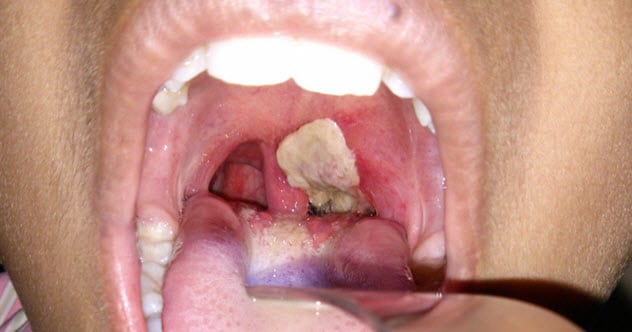
In 2015, Spain had its first case of diphtheria in 28 years. The victim was an eight-year-old boy from Catalonia. Despite Spain’s free and widely available vaccine program, the parents had decided not to inoculate their son.
In the 16th and 17th centuries, diphtheria ravaged the Iberian Peninsula. One particularly bad outbreak was known as the “year of strangulations.”
Caused by Cornynebacterium diphtheriea, diphtheria typically targets young children and adults over 60. It claims the life of 1 in 10 patients infected with the disease.
The bacteria contain a toxin which kills human tissue. It leaves dead membranes that coat the throat, making it hard to breathe and swallow. The toxin can also enter the bloodstream and attack internal organs.
6 Typhoid Fever

Typhoid fever is a deadly bacterial disease related to foodborne salmonella. There are 16–30 million cases a year, resulting in 600,000 deaths. The disease is a particular threat in developing counties with a high population density and inadequate sanitation.
Typhoid fever is usually contracted from eating or drinking contaminated water. It symptoms are high fever, abdominal pain, headaches, and nausea. It is particularly virulent among children and has a high infant mortality rate. The disease can be treated with better sanitation, safe drinking water, and improved hygiene.
Typhoid is on the rise, even in the United States. Oklahoma recently saw an outbreak just north of the state capital. The epidemic was traced back to a single family. It was believed that they contracted the disease outside the United States. Florida has also seen a rapid increase in typhoid.
5 Polio

The Americas, Europe, the western Pacific, and Southeast Asia have all been declared polio free by the World Health Organization. This gives the illusion that polio is a thing of the past. It is not.
As the World Health Organization was on the verge of declaring Africa polio free, two cases emerged in Nigeria. The remote northern Borno State is under the control of Boko Haram, the radical Islamic militants. Health workers have limited windows to vaccinate the populace, usually after Boko Haram abandons a location. Afghanistan and Pakistan have also seen outbreaks of this “wild” polio.
Ukraine also had a recent polio outbreak. What differentiates their crisis is that it was contracted from the weakened polio strains in the vaccine. Given that only half of Ukraine’s population is immunized, this could have grave results.
4 Bubonic Plague
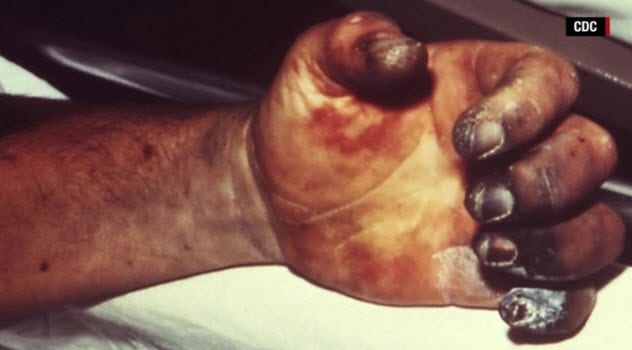
The bubonic plague is horrific. Symptoms include fever, abdominal pain, swollen lymph nodes, and nausea. It was responsible for the Black Death of the 13th century, which killed 60 percent of the European population. Another 19th-century epidemic killed an estimated 10 million.
One recent fatal case caused Chinese officials to quarantine the entire city of Yumen. Last year, an outbreak in Madagascar left 39 dead. Arizona, Colorado, and New Mexico are also hotbeds for the disease. There is an average of seven cases per year in the United States. However, there were more than 15 cases in 2015.
Yersinia pestis, the bacteria that causes the disease, can be successfully treated by antibiotics. Early treatment reduces the mortality rate to 16 percent. However, if left untreated, the fatality rate can be as high as 93 percent. Antibiotic-resistant strains have been identified, causing great concern among epidemiologists.
3 Leprosy
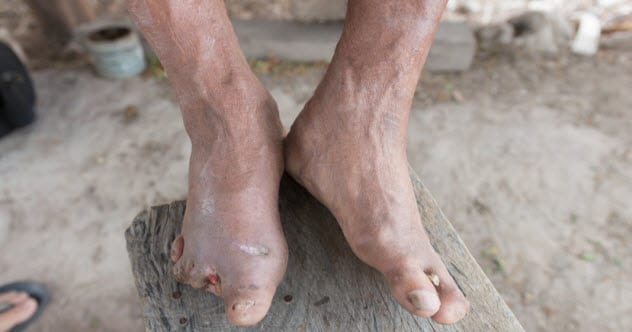
Officially known as Hansen’s disease, leprosy can lead to disfigurement, blindness, and even death. Considered by many to be an ancient ailment, leprosy is alive and well. The United States has an average of 150 cases a year.
Most thought these were the result of exposure to the disease in remote corners of the globe, where leprosy lingers. However, recent studies have revealed that these are homegrown infections passed on by the most unlikely of sources: armadillos.
The high number of leprosy infections in southern states prompted epidemiologists to explore the possible link to the armored critters. Analysis revealed that infected armadillos and humans share a genetically similar strain. The unique strain was found in 25 human patients and 28 armadillos. Fortunately, the disease is treatable with antibiotics if caught early.
2 Dengue Fever
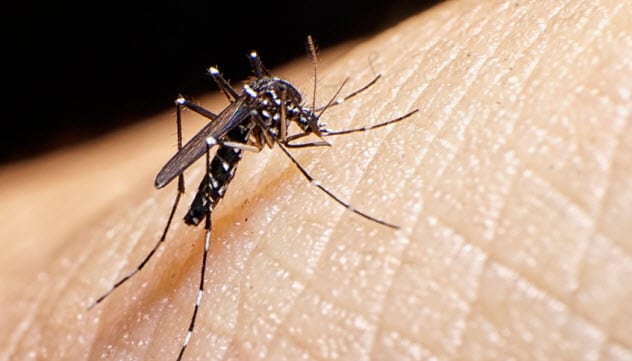
Dengue fever is ravaging the tropics. This mosquito-borne disease causes fever, joint pain, and possibly death. In late 2016, a 13-year-old girl in Karachi passed away from the disease. This makes her the fourth victim in Pakistan’s recent outbreak.
In 2015, there were 40 dengue fever deaths in Pakistan alone. Worldwide, the yearly death toll is near 20,000. The United States is not immune. In 2015, Hawaii saw the largest outbreak of the disease since it attained statehood, with 261 confirmed cases.
The dengue fever vaccine Dengvaxia recently hit the market after 20 years of development. Unfortunately, this vaccine might be as deadly as the disease. Dengue fever works by antibody-dependent enhancement. The antibodies developed from first exposure are not only useless, but they actually aid the virus the second time around.
People need to be careful as to how they administer the vaccine, or it could lead to more hospital visits. It is most effective when given to people who have already had the disease.
1 Cholera

Cholera is deadly diarrhea. Before 2010, Haiti had not experienced a rash of cholera in over 100 years. However, in 2010, infections sprang up along the Meille River. Over 400 UN peacekeepers were housed in this area. They were fresh from Nepal, which was in the midst of a cholera crisis. The base’s waste flowed into a part of the Meille.
The United Nation’s official apology came late for the 10,000 killed in the outbreak. The UN could have reduced the epidemic by 91 percent if they had treated the peacekeepers for cholera—at a cost of $1 per patient. The Haitian outbreak is still not under control.
But this disease is not limited to underdeveloped tropical backwaters. South Korea recently reported its first homegrown cholera infection in 15 years. During the 19th century, this disease ravaged the region. It killed 400,000—nearly half the population. South Korean officials do not believe the recent outbreak will lead to an epidemic. But no one can be certain.
+Further Reading
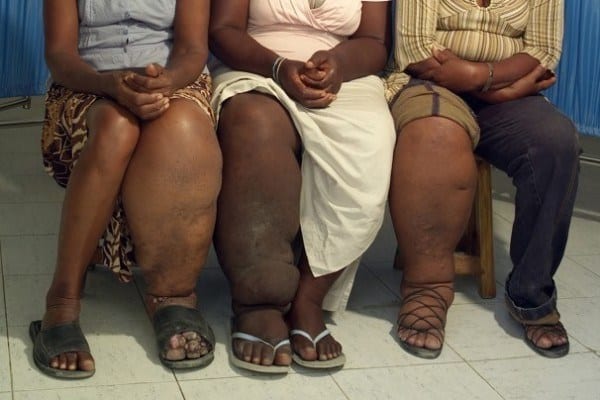
These diseases aren’t the only things making a come back! So are these lists from the archives:
10 Dreadful Symptoms Of Deadly Diseases
Top 10 Gruesome Disfiguring Diseases
Top 10 Odd Diseases With No Known Cause
10 Horrifying Diseases You Definitely Don’t Want To Catch
Abraham Rinquist is the Executive Director of the Winooski, Vermont, branch of the Helen Hartness Flanders Folklore Society. He is the coauthor of Codex Exotica and Song-Catcher: The Adventures of Blackwater Jukebox.






